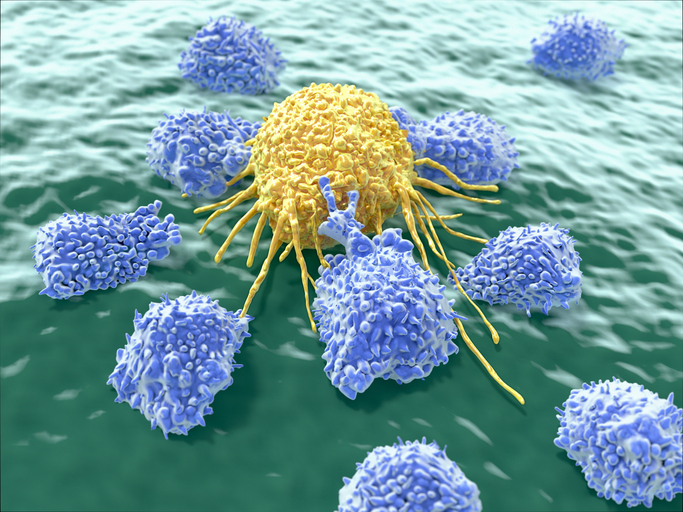HHV-6B U20 protein inhibits NK cell attacks on virally-infected cells.
The herpesviruses deploy various strategies for evading immune attacks on virally-infected cells. For example, HHV-6B is known to evade T cell attacks by expressing a virally-encoded major histocompatibility complex (MHC) protein homolog, U20. This molecule downregulates classical class I MHC (MHC-Ia) proteins to prevent presentation of viral antigens to CD8+ T cells.
An invading virus needs also to stifle attacks from natural killer (NK) cells. A new study from the University of Massachusetts indicates one mechanism by which this happens. Viral infection also stimulates the production of a protein called ULBP1. The new study demonstrates that the viral U20 protein binds to ULBP1. This inhibits the ability of an NK cell molecule, NKG2D, to bind to ULBP1, thereby stifling NK cell activation. Both cellular and soluble U20 were shown to inhibit NKG2D binding to ULBP1-expressing cells.
The investigators performed structural modeling of the U20-ULBP1 complex guided by small-angle X-ray scattering (SAXS). The modeling demonstrated that the expected binding site on ULBP1 for NKG2D is, indeed, occluded by the U20-ULBP1 complex.
The viral U20 does not appear to reduce levels of ULBP1: it just blocks binding of the NK cell to ULBP1, inhibiting NK cell activation. This was unexpected, since it previously has been shown that the U20 molecule of HHV-6A acts as an immunoevasin by decreasing surface levels of ULBP1 (Chaouat 2021)
Cell culture experiments showed that U20 interferes with ULBP1-stimulated activation of primary NK cells, as reflected by measurement of IFNy secretion and CD107a mobilization (Figure 1)

Figure 1 – Effect by U20 on ULBP1 driven NK cell IFNy secretion and CD107a mobilization.
Two other non-classical MHC molecules are expressed in response to viral infection: ULBP3 and MICB. U20 did not bind to these molecules, as it did to ULBP1, leaving open the question of whether HHV-6B down-regulates these molecules in some other way, and whether that it necessary to inhibit activation of NK cells.
Read the full article: Weaver 2024

